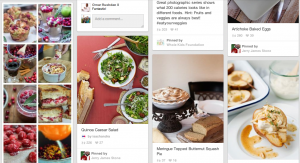In 2014, 99% of people still market like it’s 2004.
Many people are constantly browsing the Internet and their social media outlets for advice, answers, products and services. Whichever it may be, everyone has a different mindset when approaching each social media outlet.
When I go on Facebook, I’m usually interested in finding out what others are doing, whether it’s family or friends. My newsfeed consists of: engagement photos, kids, vacation pictures, pets, and concerts. When you are a brand on Facebook, it’s beneficial to include news about your business and your industry, but don’t forget to include your company’s culture. Facebook is ideally about the culture of people’s lives so “sell” yourself, but indirectly. Whether it’s promoting your blog or uploading pictures of your new office space, post content that interests people without directly selling to them.
LinkedIn is a purely business-savvy social platform. In this space, you should be producing industry or company news, whether it’s regarding a job posting or putting some perspective to an interesting news piece. When you’re marketing to your customers on LinkedIn, it’s necessary to remember that most people who visit the platform are looking for business connections, job prospects, or information about the industry you are part of.
140 characters of information are all you have to offer your audience on Twitter. It’s the fastest moving social media platform out there. In order to get their attention, your content on Twitter has to be relevant. Twitter is also the best platform for engaging with your audience. The majority of your Tweets should actually be engaging with others. Follow those that follow you. And if you don’t respond or engage with a customer or client within 24 hours, you’ve likely lost their business.
When I use Pinterest, I’m usually going there to find fashion ideas, home décor ideas, gift options, or simple food recipes. I’m going to Pinterest because I’m interested in “pinning” or buying products. So, as a company or brand, you really have to think about this. For example, Whole Foods Market does a great job of marketing to their customers via Pinterest. They have 57 boards on their page targeted towards each and every customer. Whether you’re looking for creative ideas for an upcoming holiday or healthy options for the family, Whole Foods has a board aimed at your needs. By targeting their potential customers with reasonable and realistic food products or recipe options, Whole Foods is likely to gain more customers because of the way they position themselves on Pinterest.



